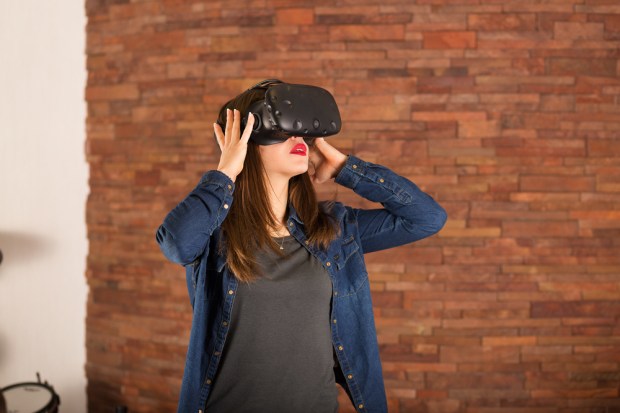Virtual Reality Gains Fresh Fuel Via Walmart Patents

Is virtual reality retail about to have a moment? Consumers seem ready, and one of the largest merchants in the world has fresh plans to appeal to shoppers via the quickly developing technology.
Walmart has filed for two patents that could make the chain a significant player in the fledgling field, which seeks to reinvent store displays for the digital age and provide other features to make shopping more appealing and efficient. One filing is for a headset and gloves via which consumers would interact with a virtual store. Another involves robots that, while located at a distant fulfillment center, would prepare items for shipping at consumer shops via VR.
Walmart, via a previous filing, also envisions pod-like physical structures that would be set up in malls, office buildings, colleges and other locations, and could be branded and offer VR-enabled shopping.
VR Activity
Other major retailers are also getting into the game. Alibaba, Lowe’s and IKEA are among the merchants moving further into VR.
Virtual reality enables retailers and other companies to stand out from the crowd. Beyond that, shoppers seem to be eager for VR, with one survey showing that 70 percent of them are “strongly interested in virtual shopping.”
Those consumers are most interested, at least for now, in using VR or augmented reality to better see how furniture or décor might look in shoppers’ homes, as 80 percent said they would like to do that. Trying on clothes and shoes with the aid of digital illusion also holds interest — 70 percent look to VR and AR to enable those tasks.
VR technology is also making its way into automotive repair, at least for owners of luxury vehicles. Travel, too, is a fertile area for the technology, as is the insurance industry. MetLife has enabled consumers in India to don a VR headset, enter a 3D-simulated environment and interact with a life insurance expert in the form of an avatar named Khushi.
VR Market Growth
Thanks to video games, movies, TV shows, novels and other means, consumers are relatively aware of at least the rough concepts of VR and AR, and that awareness seems to be growing, according to observers. That is one reason the U.S. market for virtual reality could generate $1.8 billion in 2022.
“There is high consumer interest to use VR for making purchase decisions while shopping online or in-store,” said Khin Sandi Lynn, industry analyst at ABI Research. “The availability of low-cost VR headsets is another driver of consumer VR use cases for purchasing products.”
VR Advantage
The limitations of eCommerce websites create another advantage for VR. That’s the lesson offered by Vancouver’s Six Hundred Four, which sells limited-edition sneakers designed by artists and offers an in-store experience that feels like a combination of a store and an art gallery.
“It’s tough to echo what we do in person online because it’s an art gallery,” Six Hundred Four Founder and CEO James Lepp told PYMNTS in a recent interview. As a result, Lepp offers a unique way for his customers to view his merchandise online: They can “walk” through a virtual version of his real-life store via virtual reality technology, which seeks to create a similar experience to visually exploring the store.
Virtual reality will no doubt find its way into other projects soon enough. And while patents are never a guarantee that the technology described in those filings will ever get built or deployed, Walmart’s ideas for VR provide reason to believe that the technology will keep attracting more interest from merchants and consumers.
